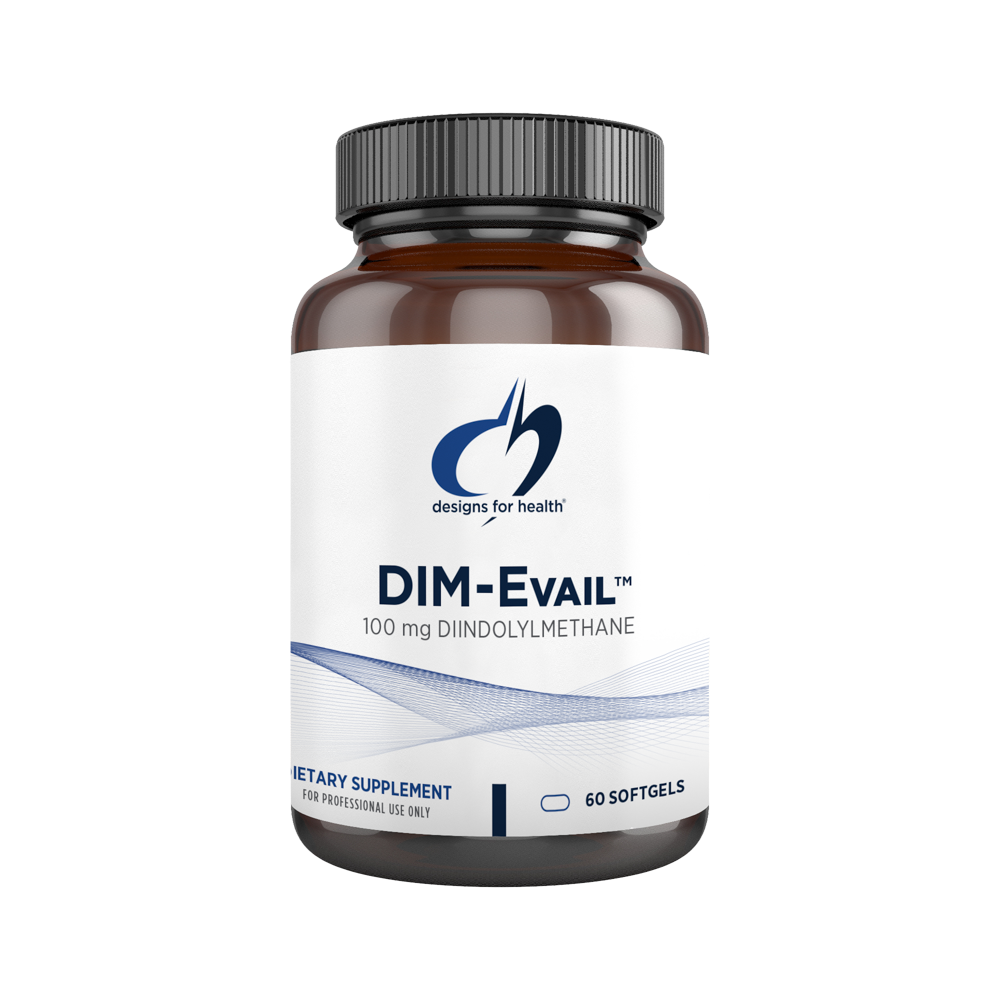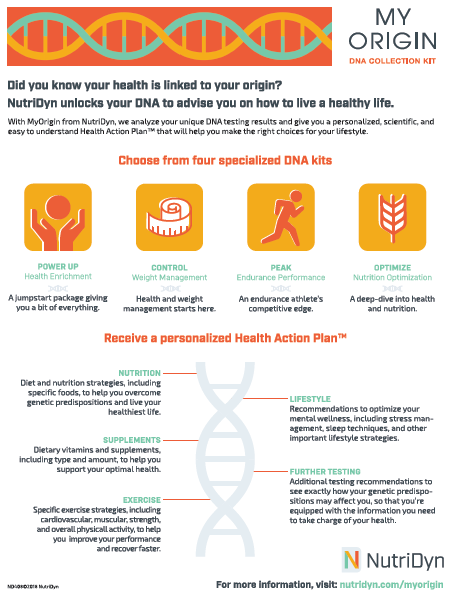Now Offering Fast & Easy DNA Testing!
Kris Greener • March 11, 2019
Stop in or Call Spero Wellness at 715-861-2300 to learn more.
Choose from a variety of panels to fit your specific needs. Each panel lists what DNA profile they are looking for:
Immune
- Rheumatoid Arthritis
- Psoriasis
- Hashimotos
- Multiple Sclerosis
- Lupus
GI
- Fructose Intolerance
- Bacterial Diversity - FUT2
- UC
- IBS
- Crohn's
- Celiac Disease
Cardiometabolic
- Diabetes
- Insulin resistance
- Blood sugar
- Metabolic syndrome
- Hypertension
- Lipid Impairement
- LP(a)
- Coronary Artery Disease
Nutrient Deficiencies
- Folate (expanded)
- Vitamin A (expanded)
- Vitamin B6 (expanded)
- Vitamin B12 (expanded)
- Vitamin C
- Vitamin D (expanded)
- Vitamin K (new)
- Vitamin E* alpha/gamma (new)
- Calcium (expanded)
- Magnesium
- Choline
- Phosphorus (new)
- Potassium (new)
- Zinc
- Iron
- CoQ10
- Omega-3 (expanded)
- Selenium
Cognitive
- Alzheimer's disease
- Anxiety
- Parkinson's disease
- Mild cognitive impairment
- Dementia
- Concussion with TBI
- Depression
Hormone 1
- Estrogen
- Progesterone
- Testosterone in Men
- Testosterone in Women
- Cortisol
- Hyperthyroidism
- Hypothyroidism
- DHEA
Hormone Add-ons
- PMS
- PCOS
- Erectile dysfunction
- Fibroids
- Endometriosis
- Perimenopause
- Precocius puberty
- Postpartum depression
- Infertility
Plus you can add specific traits and SNPs that interest you to your panel!
Take a look at what else is in the Product and Trait Overview:
Metabolic Factors
- Obesity Predisposition
- Lower Metabolic Rate
- Exercise Metabolic Rate
- Yo-yo Dieting
Sleep
- Blue Light Sensitivity
- Deep Sleep
- Shorter sleep duration
Eating Behaviors
- Mindful Eating (Eating Disinhibition)
- Snacking
- Sweet tooth
- Hunger
- Dieting Success
Stress
- Cortisol Response
Dietary Factors
- Obesity & Saturated Fat
- Weight loss & low fat diets
- Carbohydrates & Obesity
- Weight Loss & Protein Diets
- Obesity and Artificially Sweetened Beverages
Optimize
Nutrient Deficiencies
- EN: Folate
- EN: Vitamin A
- EN: Vitamin B6
- EN: Vitamin B12
- EN: Vitamin C
- EN: Omega 3
- EN: Selenium
- EN: Coq10
- EN: Iron
- EN: Zinc
- EN: Calcium
- EN: Magnesium
- EN: Choline
Taste Preference
- Sweet taste
- Salty taste
- Bitter taste
- Creamy taste
- Carbonation taste
- Cilantro taste
- Artifical sweetener taste
Metabolism
- Saturated Fat & Obesity
- Lactose Intolerance
- Gluten Sensitivity
- Caffeine Metabolism
- Alcohol Metabolism
Peak
Nutrients
- Iron
- Calcium
- Vitamin D
- Vitamin B12
- Magnesium
- Vitamin C
Caffeine Metabolism
- Caffeine Metabolism
Motivation
- Motivation
- Novelty seeking
- Personality Type (warrior/worrier)
Injury Susceptibility
- Ligament and tendon injury
- Disc degeneration
- Muscle Damage
Muscle Fiber Type
- Muscle Fiber Type
Endurance Potential
- Training response
- Improved Performance
- VO2Max
- Lactate
Best Time to Train
- Optimal Training Time
Recovery
- Sleep
- Oxidative Stress
Metabolic Factors
- Metabolic Rate
- Obesity Predisposition
- Exercise & Fat Loss
Power Up
Nourish
- Folate
- Iron
- Calcium
- Vitamin D
- Vitamin B12
- Obesity & Saturated Fat
- Lactose Intolerance
- Caffeine Metabolism
Thrive
- Obesity
- Exercise & Fat Loss
- Yo-Yo Dieting
- Blue Light Sensitivity
- Deep Sleep
- Cortisol response
RunDNA
- Fiber Type
- Disc degeneration
- Endurance training response
- Motivation to Exercise
Misc
- Heart Health
- Aging

Want help to get ready for the holidays? Having difficulty adjusting to the time change? Consider an NAD Infusion. What are the benefits? NAD+ (nicotinamide adenine dinucleotide) is a coenzyme that powers metabolic processes and impacts a wide variety of systems including digestion, cognition, mental clarity, aging, and overall energy levels. NAD+ increases our body’s levels of serotonin, a neurotransmitter associated with mood regulation, and can improve symptoms of depression and anxiety. NAD+ plays a role in cell health and in hundreds of cell functions such as DNA repair, circadian rhythm, metabolism, muscle function, tissue repair and cognitive function. Basically, our cells require NAD+ to quickly shuttle around electrons - keeping the cells buzzing with the electricity of life! Who is it for? NAD+ is the premier IV drip for clients who want to see major improvements in brain function, energy level, overcome anxiety and depression, handle acute and chronic stress more effectively, and cope better with PTSD. What's inside? We administer 250mg or 500 mg of NAD+ in an IV drip. (We always start with 250mg the very first time you try it.) How often? For best results, NAD+ may need several sessions depending on personal needs. The number of sessions will be discussed during an initial encounter. The NAD+ IV drip does take longer to receive than any other IV drip. Each session may last from 2.5 to 4 hours, depending on the tolerance. During the infusion, an individual might feel a bit of discomfort compared to standard vitamin drips - described as a bit of a rush through the body, but this is completely normal and can be controlled by how fast the IV is set to drip and stops within a minute or two after the drip ends. Our NAD+ drip can be followed by Glutathione -"Master Antioxidant " - for best results. Fall 2023 Special - 250mg is $250 and 500mg is $350. Glutathione 1g added on after the infusion is $35.00.

Unfortunately, most of us know someone who has been affected by breast cancer. As of January 2022, here are some key facts about the prevalence of breast cancer in the United States: Common Cancer in Women: Breast cancer is the most common cancer among American women, aside from skin cancer. Incidence: In 2021, it was estimated that there would be over 281,000 new cases of invasive breast cancer in the United States. Additionally, there would be around 49,290 new cases of non-invasive breast cancer. Lifetime Risk: The American Cancer Society estimates that the lifetime risk of a woman developing breast cancer is about 13%, or 1 in 8. Mortality: In 2021, it was projected that approximately 43,600 women in the United States would die from breast cancer. Age and Breast Cancer: The risk of developing breast cancer increases with age. Most breast cancer cases are diagnosed in women aged 55 and older. Race and Ethnicity: Breast cancer incidence and mortality rates vary by race and ethnicity. White and African American women have the highest incidence rates, while African American women have a higher mortality rate. Screening and Early Detection: Mammography, thermography and regular breast self-exams are important tools for early detection. The earlier breast cancer is detected, the more treatment options are available, and the better the chances of survival. Survival Rates: Survival rates for breast cancer have been improving over the years, in part due to early detection and advances in treatment. The 5-year relative survival rate for localized breast cancer is close to 100%. Genetic Factors: Some individuals, particularly those with a family history of breast cancer or certain genetic mutations (e.g., BRCA1 and BRCA2), have a higher risk of developing breast cancer. Preventive Measures: Lifestyle factors such as maintaining a healthy weight, regular physical activity, limited alcohol consumption, and avoiding smoking are associated with a reduced risk of developing breast cancer. As mentioned above, the BRCA gene mutation is associated with a significantly increased risk of developing breast and ovarian cancer. For those who carry this genetic mutation, the need for effective preventive measures and early detection strategies is of paramount importance. Recent research has shed light on the potential role of DIM, a natural compound found in cruciferous vegetables, in this context. Diindolylmethane is a bioactive compound that has garnered attention for its health-promoting properties, particularly in cancer prevention. Our growing understanding of DIM's mechanisms and its impact on individuals with the BRCA gene mutation has opened new avenues of exploration. Here are some key aspects of how DIM could potentially benefit healthy BRCA gene carriers: Modulation of Estrogen Metabolism: DIM has been shown to influence the metabolism of estrogen, a hormone that plays a crucial role in breast cancer development. By favoring the production of a less potent and potentially less harmful form of estrogen, DIM may help reduce the cancer-promoting effects of this hormone. Regulation of BRCA Gene Expression: Emerging research suggests that DIM might influence the expression of the BRCA genes themselves. This could have a significant impact on the way these genes function and interact with cancer development pathways. Reduction of Breast Density: High breast density is associated with an increased risk of breast cancer and can also make it more challenging to detect tumors via traditional screening methods. Preliminary studies indicate that DIM may contribute to a decrease in breast density, potentially improving the effectiveness of breast cancer screening for BRCA gene carriers. There's a study that utilized DFH's DIM-Evail formula at the time. It has since been reformulated to be even more bioavailable! Pretty cool information and definitely a step in the right direction! This study investigated the effect of DIM supplementation on breast density, a recognized predictive factor of breast cancer risk. Participants were 23 healthy female BRCA carriers, with the majority being post-menopausal. They were treated with oral DIM 100 mg × 1/day for 1 year. The amount of fibroglandular tissue (FGT) and background parenchymal enhancement (BPE) on magnetic resonance imaging (MRI) performed before and after the intervention was scored by two independent expert radiologists using the Breast Imaging and Reporting Data System. The results showed a decrease in the average score for FGT with no significant change in BPE. A group of DIM-untreated (age and menopausal status matched women) from the BRCA clinic did not show a significant change in FGT amount in a parallel year. . In conclusion, 1 year’s supplementation with DIM 100 mg × 1/day in BRCA carriers was associated with a significant decline in FGT amount on MRI. Interestingly, besides certain gene mutations, there are many other variables that have been shown to increase the risk for breast cancer. These include: · Mold Toxicity/Exposure · Radiation Exposure · Breast Implants · Heavy Metals (Including Amalgam Fillings) · Dental Infections · Toxins such as BPA, PFAS/PFOAs · Phthalates

Dr. Kristie, dietitian Chelsi, and health coach Cheryl recently attended a thought-provoking conference on cardiometabolic disease where they encountered a captivating discussion on the role of uric acid in cardiovascular health. Spearheaded by renowned author and physician, Dr. David Perlmutter, the conversation shed light on the importance of maintaining optimal uric acid levels and its impact on our overall well-being.


